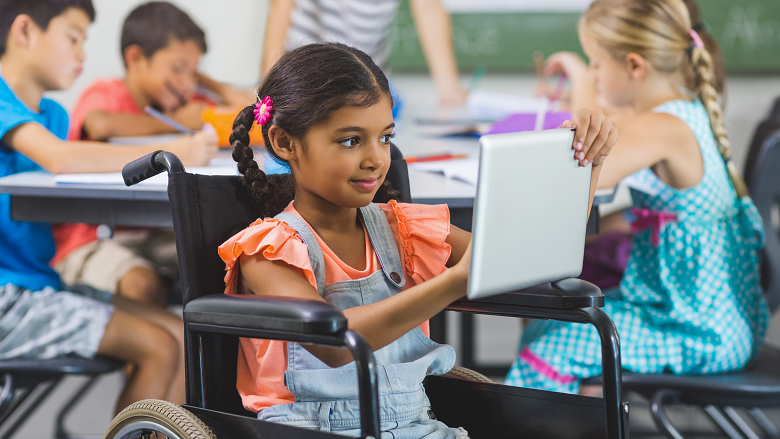When parents choose to send their children to school, their goal is for that child to get a great education and be ready to handle anything that comes their way in life. But many students come to the classroom with a variety of different challenges that can make learning more difficult than normal. Without an inclusive education, it is harder for these children on the outskirts to receive the high-quality education that they need.
An inclusive education is one where all of the students, regardless of any specific challenges the student may have, are placed in age-appropriate general education classes found in their own neighborhood schools. The goal is to provide high-quality supports, interventions, and instruction so that everyone is able to reach success in the core curriculum, regardless of their background or any special situations that may make this difficult.
When we look at an inclusive classroom and school set-up, we see that many of them operate on the idea that any student with a disability are as competent as students without disabilities. With this idea, all students are able to participate in their own classrooms and in the community of the school as a whole. This is what inclusivity is all about. While students with disabilities need additional support and intervention to help them meet these goals, they are still capable of learning and succeeding in the classroom.
While students with disabilities are allowed support and intervention based on their needs, the overall goal is to have them in the classroom with their peers without disabilities as much as possible. This allows them to feel included, rather than sent off to another part of the school and not allowed to be with their peers most of the day. Even if they need support in the different subjects, they get the social interaction and to feel like a part of the community, which can aid in their learning as well.
One of the biggest principles of inclusive education is the idea that all students need to feel welcomed in the school. If certain students are sent off to their own areas and not allowed to be with their peers during the day, even if they are receiving instruction and support, it can be damaging to their perception of school. When the student stays in the classroom, the results are better.
Inclusive education also asks that all students, no matter the different challenges they face, should be challenged at an appropriate level and supported in all of their efforts. In addition, it is also important that the adults in the system are supported as well, including both the special education and the regular education teacher in the room.
Erica D. Smith is an advocate for inclusive education. No matter the challenges that students may face in their daily lives, they deserve to get the best education possible. With the help of other legislatures and dedicated teachers and staff, she is working to make schools throughout the United States more inclusive for everyone.…

